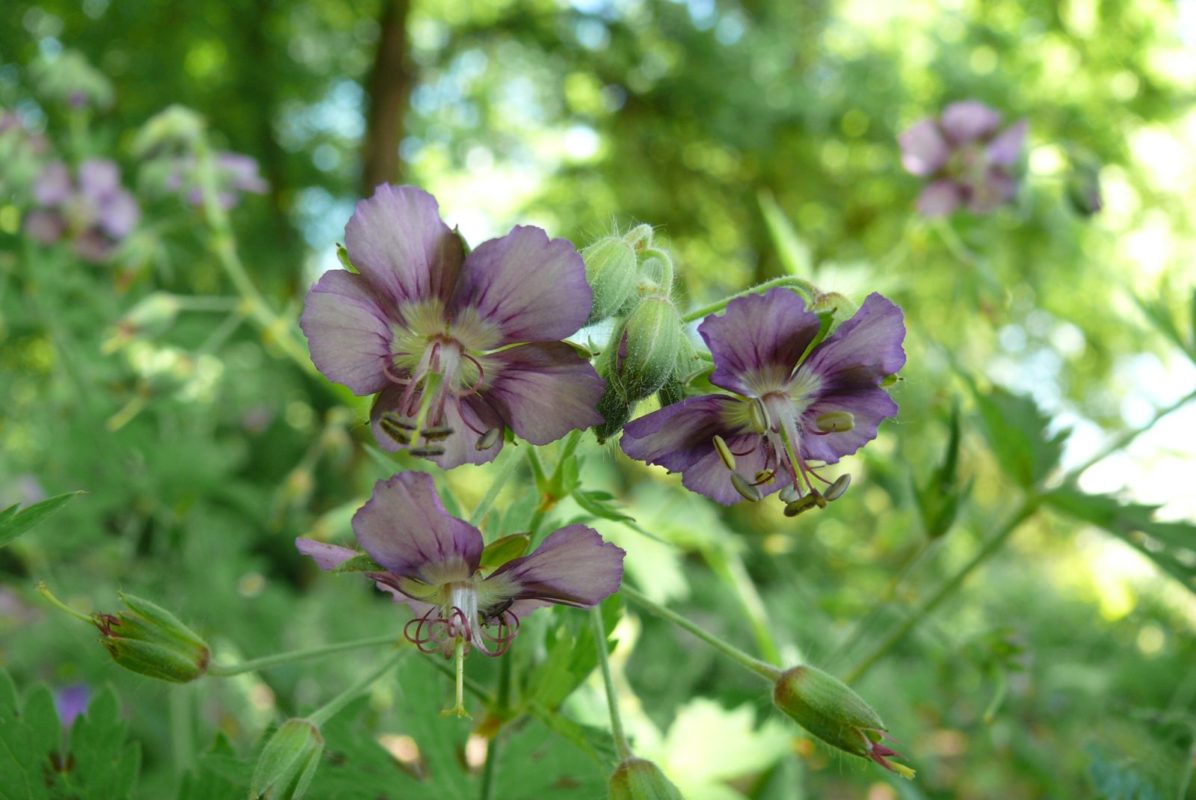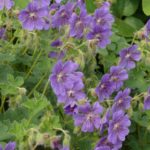Kakosty (Geranium) Herbs are extremely plastic with a wide range of use in gardens, in parks and other embodiments sadovnických. This variability is due to their diverse occurrence in nature, where we can find a slightly damp kinds of European and Asian bow (G. pratense, G. wlassovianum, G. platypetalum), plants and drier southern slopes and rocks, loving enough sun (G. sanguineum, G. dalmaticum, G. gray), kind of shady, rocky hills and forest suťovišť (G. macrorrhizum), or plants to coastal wetland habitats (G. phaeum, G. palustre) and there will be even species, that survive a period of hot, dry Mediterranean summers in the form of underground tubers (G. tuberosum).
- Geranium sanguineum 'Tiny Monster'
- Geranium sanguineum our. striatum
Application of geranium in the gardens is closely linked to the conditions, in which they grow in nature. Geranium is extremely well suited for group plantings in nature but also fashionably designed gardens, na Záhony, the undergrowth trees, where some can withstand so. dry shade, the vast majority of plants does not. Is there also a number of species rockery garden and small parts, full sun to partial shade, or vice versa. Some species may well be used as a replacement turf. The vast majority of species and cultivars geranium flowering in early summer (June) and repeat flowering. However, there are also several rare varieties, that can bloom from June until October. typical, a snad již i klasickým příkladem takových je kultivar 'Rozanne', which currently ranks among the most popular one.
- Geranium 'Rozanne' in early October
- Geranium 'Rozanne'
geranium propagation
Botanical species can reproduce sowing seeds in the winter or in early spring. Cultivars are propagated vegetatively mainly to ensure their authenticity. In species with ground floor rhizomes
(G. macrorrhizum, G. × cantabrigiense) goes very well apply cuttings. If available incubator, Then you can plant Řízková almost throughout the year. For species, which is rather a rosette and přisazují offshoots (G. pratense, G. phaeum) it is appropriate to divide the plants, either in the spring or summer, after flowering.
- Geranium phaeum 'All Saints'
- Geranium phaeum 'David Bromley'
Diseases and Pests
Geranium diseases almost do not suffer, and if, thus only slightly. In the summer or the upcoming autumn may appear powdery mildew, as a whitish coating on leaves. Pest may occur Vine (Otiorhynchus sulcatus), whose larvae damage in the root collars. Can wreak more damage only in larger plantings and nurseries potted culture. Here is a possible biological control parasitic nematode species Heterorhabditis. During pre-cultivated or propagation in the greenhouse and cold frame can appear whiteflies, aphids and other sucking insects.
- Geranium 'Midnight Reiter'
- Geranium pratense 'Splish Splash'
- Geranium renardii 'Terre Franche'
- Geranium sanguineum 'Elke'
- Geranium subcaulescens 'Giuseppi'
- Geranium wlassovianum 'Blue Star' Autumn leaf color
- Geranium wlassovianum
- Geranium cantabrigiense 'Juke Brenann'
- Geranium 'Lawrence Flatman'
- Geranium himalayense 'Derrick Cook'
- Geranium macrorrhizum 'Ingversen´s Variety' Autumn leaf color
- Geranium pratense 'Plenum Violaceum'
- Geranium × cantabrigiense 'Biokovo'
- Geranium magnificent ' Hylander'












































I love qualities, beautiful plants, I have several species and I am very happy with them.